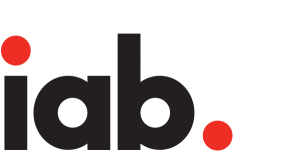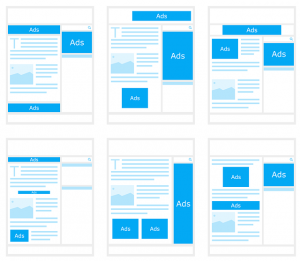
The Interactive Advertising Bureau (IAB) is perhaps the most influential organization in the online advertising business and, currently, brings together more than 650 leading companies in the industry that control 86% of the U.S. market. With a strong presence in the rest of the industrialized world as well, today IAB has become a standard for content classification, especially in fields with strong ties to the digital economy and new social media.
In fact, IAB promotes advertising techniques like behavioral targeting, which allows advertisers to direct marketing campaigns to specific users (according to their age, place of residence, political views, interests, etc.) and thus increase their effectiveness. What’s more, the organization is making consistent progress in the field of geotargeting, an area of digital marketing that is on the rise thanks to the unprecedented diffusion of mobile devices connected to the Internet and the latest advances in Internet-of-things technologies.
Both marketing agents (who produce and sell ads) and content generators (who sell advertising space) must consider the characteristics of new media, which enable users to access any content from anywhere in any language, all in a technological context where immediacy prevails. For this reason, to create a successful marketing campaign, two conditions must be fulfilled: the person who offers ads must know what the most appropriate and profitable media platforms for their ads are, and the person who sells advertising space needs to ensure that such ads are adequate for their usual audience. In other words, the better categorized the spaces and the ads, the more agile and effective the production, sale, and diffusion of publicity campaigns.

It comes as no surprise that, years ago, IAB collected its knowledge to publish a classification model for digital content (initially only for web pages). In 2011, the IAB Networks and Exchanges Committee created the organization’s first taxonomy as part of a more extensive project, the Quality Assurance Guidelines (QAG) Program. This two-tier taxonomy is made up of 24 first-level categories and 361 second-level ones, thus forming a total of 385 classification possibilities. In MeaningCloud, we integrated the IAB taxonomy in the Text Classification API in 2015: check our demo to evaluate the automatic classification capabilities of the tool.
Earlier this year, The IAB Tech Lab, which heads the association’s IT department, released a new version of the taxonomy, called Content Taxonomy Version 2.0. Its objective is to respond to an increasingly digitized and global market. The update process consisted of publishing a rearrangement of the taxonomy based on the feedback regarding its effective implementation given by the most influential advertising agents on the market. The feedback received has helped to improve the classification scheme in two aspects: on the one hand, the new taxonomy reflects the technological advances and the changes that have been affecting content production and consumption. On the other hand, as stated by IAB itself, “the nomenclature [has been] expanded to reflect a global perspective, making it more inclusive of all areas of the world.”
Indeed, we can list four main weaknesses of the first IAB Content Taxonomy:
- Some categories are not applicable at a global level (e.g. Law, Govt. & Politics>U.S. Government Resources)
- Inconsistent categories or groups of categories (e.g. Travel>Italy and not Travel>Spain)
- Out-dated categories (e.g. Technology & Computing>MP3/MIDI)
- The absence of some relevant subject areas (e.g. global economy, cultural and leisure products).
In the latest version, these and other inaccuracies have been corrected (like the category Astrology under Science), irrelevant categories have been removed and others (both first-tier and second-tier) that would ensure a much wider coverage have been added. Now, citing some examples, the IAB Content Taxonomy permits to classify also contents that deal with popular culture, economy and finance, virtual reality, and big data. Check out the new IAB Content Taxonomy here. The definitive version of the Content Taxonomy 2.0 was published in November 2017 by the IAB Tech Lab and is ready for adoption by the digital advertising industry.
At MeaningCloud, we have implemented this latest version of the taxonomy, this time using our Deep Categorization API. This API employs a taxonomy with predefined categories to perform detailed and accurate categorization of text at fragment level, rather than at document level. In this way, it can discover text blocks or passages that express sub-contexts and to reflect the structure of themes and sub-themes within a document, in order to understand it better. Content Taxonomy Version 2.0 will be published as a basic model, available for free to all users of the Deep Categorization API.
If you wish to know more about our Deep Categorization API, which now includes the new IAB taxonomy, click here or contact us!

